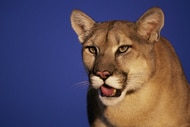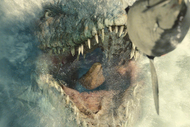Create a free profile to get unlimited access to exclusive videos, sweepstakes, and more!
Why did one of our human ancestors adapt to climate change—but perish?

Humans weren’t always the culprits behind potentially lethal climate change. Some of our ancestors were more likely the victims.
Paranthropus robustus could probably fit right in with the Croods, but it had more brute strength than we do because of the conditions it faced. That wasn’t the only thing about it that stood out to anthropologists who studied new fossils that suggested P. robustus went through rapid phases of evolution around 2 million years ago. It is thought to be climate change that determined what this hominid would have to eat to survive, and it not only survived but thrived. It almost out-survived our more direct ancestor Homo erectus. While it seemed like H. erectus was more likely to fade out, something unexpected happened.
Evolutionary relationships between different human species that evolved and then died out in the distant past are reconstructed using the fossil record. The new P. robustus specimens found in South Africa's Drimolen cave system give away how the species stayed alive. Darwin called it—our ancestors had to adapt and change over time if they wanted a chance at staying around.
“The entire field of palaeoanthropology is geared towards finding fossil evidence for these earlier representatives of humanity and reconstructing their biology and behavior,” paleoanthropologist Jesse Martin, a doctoral candidate at La Trobe University who led a study recently published in Nature Ecology & Evolution, told SYFY WIRE. “Once we have ascertained which species a fossil human ancestor belongs to by comparing it to other known examples, we can begin to piece together lineages by working out whether one species evolved into another.”
Martin and his colleagues use a method known as cladistic analysis to figure out these relationships. Clades are groups of organisms, both extant and extinct, that evolved from a common ancestor. Cladistic analysis involves figuring out which characteristics belong to which species, using all the features species have in common to determine when each species in a particular clade evolved and how closely they are related. This is where you get that famous timeline that starts with an apelike creature and ends with Homo sapiens. We might have genes in common with sea sponges, but that doesn’t put us in the same clade.
P. robustus emerged in South Africa just as its predecessor Australopithecus was dying out and also when the first human species belonging to the Homo genus, which we are the most evolved members of, started to appear. This transition only took twenty or thirty thousand years (nothing on an evolutionary timescale). Australopithecus is thought to have met its demise because of climate change it was unable to handle. Until now, Homo and Paranthropus were thought to have had an easier time, but fossils have made it more obvious that they also suffered from climate-induced stress that pushed them to adapt. Differences between the newly unearthed P. robustus specimens and fossils from earlier specimens show how fast it evolved.
“In the case of P. robustus, we know that the species adapted to this changing environment by evolving ever bigger teeth and chewing muscles, paired with a relatively small brain,” Martin said. “At the same time, we know that our direct ancestor, Homo erectus, first appears on the landscape and is headed off in an entirely different direction. By contrast our ancestor is growing bigger brains and smaller teeth, both probably adaptations relating to diet, to make a living in a changing world.”
Earlier P. robustus had smaller teeth and weaker chewing muscles than their descendants. The bony arch of the cheek that is also important in chewing was also positioned further forward in later specimens, which gave them more bite force. This hominid evidently responded to outside stimuli from a climate that kept growing drier, developing powerful jaws so it could grind up the nearly inedible things that also evolved to be tougher. This is why it ended up being such a successful species for a million years. Homo sapiens have only been around 300,000 years, and while we think we have reached our final phase of evolution, you never know.
Unfortunately for P. robustus, further climate change finally took it down. It doesn’t look that way on the fossil record for a while. For every H. erectus, there were ten P. robustus, so it seemed that having more brawn and less brain would have meant survival. The thing about H. erectus is that it had enough brain to turn to hunting instead of developing chewing skills that would eventually expire as the climate changed again. Martin believes that this stubbornness is why it became extinct.
“As the climate changed again, P. robustus was probably less able to adapt quickly, having spent over one million years becoming specialized at eating a particular food source,” he said. “Once this food source disappeared, so too did P. robustus.”
The way climate change affected our ancestor should tell us to watch out. With enough damage, we could be next.
















